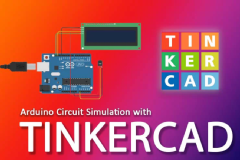Title: Introduction to Robotics with Hands-On Projects
Target Audience: High school and undergraduate STEM students.
Duration: 4 weeks (12 sessions, 2 hours per session).
Learning Outcomes
By the end of this course, students will:
- Understand the basics of robotics, electronics, and programming.
- Learn to design, build, and program robots.
- Complete three robotics projects: Line Follower Robot, Edge Avoider Robot, and Mobile-Controlled Robot.
- Develop skills in troubleshooting and innovation.
Course Modules
Module 1: Robotics Fundamentals (Week 1)
Session 1: Introduction to Robotics
- What is robotics?
- Applications of robotics in STEM.
- Overview of robotics hardware and software.
Session 2: Introduction to Components
- Hardware: Motors, wheels, chassis, sensors (IR, ultrasonic), and microcontrollers (e.g., Arduino).
- Software: Arduino IDE and basics of C/C++ programming.
- Hands-on: Assemble a basic robot chassis.
Module 2: Line Follower Robot (Week 2)
Session 3: Understanding the Line Follower Robot
- Problem Statement: Build a robot that can follow a black or white line on the ground.
- Concepts: IR sensors, motor drivers (e.g., L298N), and PID control.
- Circuit Design: Connecting IR sensors and motor drivers to Arduino.
Session 4: Building and Programming
- Code: Calibrating sensors and writing a line-following algorithm.
- Testing: Adjusting sensor thresholds and testing robot movement.
- Outcome: A robot that follows a defined path.
Module 3: Edge Avoider Robot (Week 3)
Session 5: Understanding the Edge Avoider Robot
- Problem Statement: Build a robot that avoids falling off edges (e.g., table edges).
- Concepts: Ultrasonic sensors and distance measurement.
- Circuit Design: Interfacing ultrasonic sensors with Arduino.
Session 6: Building and Programming
- Code: Writing logic to stop or turn the robot when an edge is detected.
- Testing: Placing the robot on different surfaces to check edge avoidance.
- Outcome: A robot that navigates safely without falling.
Module 4: Mobile-Controlled Robot (Week 4)
Session 7: Understanding Mobile-Controlled Robots
- Problem Statement: Control a robot using a smartphone.
- Concepts: Bluetooth module (e.g., HC-05), communication protocols, and control signals.
- Circuit Design: Connecting Bluetooth module and motors.
Session 8: Building and Programming
- Code: Writing Arduino code to process Bluetooth commands.
- Mobile App: Setting up a mobile app (e.g., Arduino Bluetooth Controller) for control.
- Testing: Sending commands to control robot movement via mobile.
- Outcome: A robot controlled by a smartphone app.
Additional Activities
Session 9-10: Debugging and Integration
- Review common issues in hardware connections and programming.
- Combine all features to create a multifunctional robot.
Session 11: Project Demonstration and Competitions
- Students present and demonstrate their robots.
- Challenges: Obstacle course or line-following race.
Session 12: Wrap-Up and Future Scope
- Recap: Key takeaways from the course.
- Discuss advancements in robotics: AI integration, IoT-based robots.
- Career and academic opportunities in robotics.
Course Materials
Hardware Kits:
- Arduino board (UNO or Nano).
- Motor driver (L298N).
- IR sensors, ultrasonic sensors, Bluetooth module (HC-05).
- Wheels, motors, chassis, jumper wires, and batteries.
- Software:
Arduino IDE.
- Mobile apps for robot control (e.g., Arduino Bluetooth Controller).
Assessment Criteria
- Practical Demonstration (60%)
- Code and Circuit Design Documentation (30%)
- Participation and Teamwork (10%)






